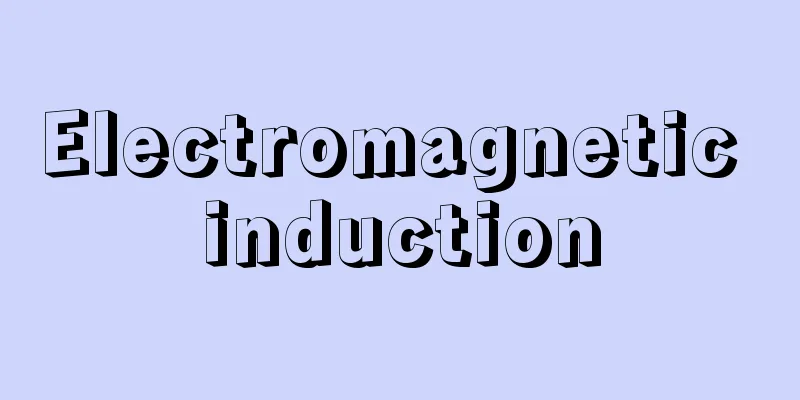Metal halide lamp - metal halide lamp

|
A lamp in which metal halides are enclosed in a quartz light tube, and the metal halides are evaporated and dissociated by arc discharge, emitting light specific to the metal and its compounds. In 1961, Gilbert H. Reiling (1928- ) of the United States announced that adding sodium, thallium and indium iodides to the light tube of a mercury lamp greatly improved both the light color and color rendering, and this was put to practical use. After that, lamps containing scandium and sodium iodides, dysprosium, thallium and indium iodides, and tin iodide were put to practical use. Since the spectrum of the enclosed metal and its compound is specific, the luminous efficiency is higher than that of mercury lamps, and color rendering (how the color appears) can be improved. The first lamps to be put to practical use in Japan were tin-containing lamps, which were used to light a bank office in Nagoya in 1966 (Showa 41). Later, many metal halide lamps were used at the World Expo held in Osaka in 1970, and they became widespread. [Akio Obara and Makoto Bessho] Structure and PrincipleIt has a similar structure to a mercury lamp, with mercury, rare gas (such as argon), and metal halides sealed inside a quartz light-emitting tube. The glass outer bulb is either filled with an inert gas such as nitrogen, or is evacuated. The arc discharge between the electrodes causes the metal halides to break down into metal atoms and halogen atoms, and the excitation and ionization of the metal atoms produces light characteristic of the metal and its compounds. Sodium and thallium, for example, produce line spectra. Tin halides emit light in a molecular form, producing a continuous spectrum. [Akio Obara] Metal halides are used because they can produce a higher vapor pressure of metal vapor compared to simple metals. In the 2000s, ceramic metal halide lamps became mainstream, with greater efficiency achieved by replacing the quartz in the light-emitting tube with ceramics. Because ceramics are more chemically stable than quartz, reactions with the enclosed metal halide are suppressed, allowing a wider range of chemicals to be used. As a result, it has become possible to achieve higher efficiency and improved color rendering than quartz-type metal halide lamps. [Makoto Bessho] kinds(1) Sodium-thallium-indium system: This white light emits a combination of the orange-yellow color of sodium (dominant wavelength 589 nanometers), the green color of thallium (535 nanometers), and the line spectrum of indium (451 nanometers). It is available in models ranging from 100 to 2000 watts. (2) Scandium-sodium type: Lamps that combine the multiple spectra of scandium with the line spectrum of sodium. Available in 100 to 2000 watts. This type is the most widely used. (3) Dysprosium-thallium series: Lamps that combine the multiple spectra of dysprosium with the line spectrum of thallium. Available in 50 to 3500 watts. (4) Tin-based: These lamps utilize the continuous spectrum produced by the molecular emission of tin halide. They have excellent light color and color rendering and are available in 125 to 400 watts. (5) Short Arc Type: Short arc type lamps containing dysprosium-holmium-thulium, sodium-thallium-indium (or gallium) and tin-indium halides are used as light sources for projectors, color televisions, cinematography, etc., and have excellent color rendering properties. (6) Special-purpose lamps Since the enclosed metals allow them to emit a specific light, there are lamps for different purposes. Lamps for copying machines, printing and plate baking (containing gallium), ink curing (containing iron), ultraviolet light, and photochemical reactions (containing sodium or thallium) are in practical use. Lamps in the range of 100 watts to 60 kilowatts are in practical use. [Akio Obara and Makoto Bessho] Properties and ApplicationsThey have relatively good color rendering and are 1.5 times more efficient than mercury lamps, but have a lifespan of 6,000 to 9,000 hours. They are used for lighting indoor and outdoor sports facilities, high-ceiling factories, offices, halls, stores, etc. [Akio Obara and Makoto Bessho] [Reference] | | |©Takashi Aoki Metal halide lamp structure Source: Shogakukan Encyclopedia Nipponica About Encyclopedia Nipponica Information | Legend |
|
金属のハロゲン化物を石英の発光管に封入し、アーク放電によって、金属ハロゲン化物を蒸発、解離させ、それによって放射される金属およびその化合物特有の光を利用したランプ。1961年アメリカのレイリングGilbert H. Reiling(1928― )が水銀ランプの発光管の中にナトリウム、タリウムおよびインジウムのヨウ化物を添加封入して、光色や演色がともに大幅に向上することを発表し、実用化された。その後、スカンジウムおよびナトリウムのヨウ化物入り、ジスプロシウム、タリウムおよびインジウムのヨウ化物入り、ヨウ化スズ入りなどのランプが実用化された。封入した金属およびその化合物固有のスペクトルが得られるので、効率は水銀ランプの発光効率よりも高く、また演色性(色の見え方)を向上することができる。日本で初めて実用化されたのはスズ入りランプで、1966年(昭和41)名古屋の銀行営業室の照明に用いられた。のち1970年大阪で開かれた万国博覧会で多くのメタルハライドランプが使用され、普及するようになった。 [小原章男・別所 誠] 構造・原理水銀ランプと類似した構造で、石英の発光管の中に水銀と希ガス(アルゴンなど)のほか金属のハロゲン化物を封入する。外管のガラス球内は窒素などの不活性ガスを封入するか、真空にする。電極間のアーク放電により、金属ハロゲン化物は金属原子とハロゲン原子とに分解し、金属原子の励起、電離によって、金属およびその化合物特有の光を発生する。ナトリウム、タリウムなどは線スペクトルである。また、スズのハロゲン化物の場合は分子状で発光するので、連続スペクトルである。 [小原章男] 金属ハロゲン化物を使用するのは、金属単体と比較して、金属蒸気の蒸気圧が高くできるからである。2000年代に入ると、発光管の石英をセラミックスとすることによってより効率を高めたセラミック・メタルハライドランプが主流になっている。セラミックスは石英に比べて化学的に安定なので、封入する金属ハロゲン化物との反応が抑制され、使用できる化学物質の範囲を広げることができる。その結果、石英タイプのメタルハライドランプよりも効率を高め、演色性も向上させることが可能になった。 [別所 誠] 種類(1)ナトリウム‐タリウム‐インジウム系 ナトリウムの橙黄(とうこう)色(主波長589ナノメートル)、タリウムの緑色(535ナノメートル)、インジウム(451ナノメートル)の線スペクトルとを組み合わせた白色光で、100~2000ワットの種類がある。 (2)スカンジウム‐ナトリウム系 スカンジウムの多数のスペクトルとナトリウムの線スペクトルとを組み合わせたランプ。100~2000ワットの種類がある。この種類がもっとも多く使用されている。 (3)ジスプロシウム‐タリウム系 ジスプロシウムの多数のスペクトルとタリウムの線スペクトルとを組み合わせたランプ。50~3500ワットの種類がある。 (4)スズ系 スズのハロゲン化物の分子発光による連続スペクトルを利用したもの。光色と演色がともに優れたランプで、125~400ワットの種類がある。 (5)ショートアーク型 映写機、カラーテレビ、映画撮影などの光源として、ジスプロシウム‐ホルミウム‐ツリウム、ナトリウム‐タリウム‐インジウム(またはガリウム)およびスズ‐インジウムのハロゲン化物入りなどのショートアーク型ランプがあり、演色性が優れている。 (6)特殊用途のもの 封入金属によって特有の光を出すことができるので、用途に応じたランプがある。複写機用、印刷・製版焼付け用(ガリウム入り)、インキ硬化用(鉄入り)、紫外線用、光化学反応用(ナトリウム、タリウム入り)などが実用化されている。100ワット~60キロワットの範囲で実用化されている。 [小原章男・別所 誠] 特性および用途演色性が比較的優れ、効率も水銀ランプの1.5倍であるが、寿命は6000~9000時間である。屋内外のスポーツ施設、高天井の工場、事務所、ホール、店舗などの照明として使用されている。 [小原章男・別所 誠] [参照項目] | | |©青木 隆"> メタルハライドランプの構造 出典 小学館 日本大百科全書(ニッポニカ)日本大百科全書(ニッポニカ)について 情報 | 凡例 |
Recommend
Aeridovanda
...Cultivation through crossbreeding has also bee...
Catamaran ship - Catamaran ship
〘Noun〙 (Catamaran) ① A raft made of two or three l...
Neuroglial
…Also called glia. A general term for the cellula...
Kokei
?-? A monk from the mid to late Edo period. Jodo ...
Movement - migration
Migration is the movement of an organism from one...
Cassa per il Mezzogiorno
...Thus, one of the factors behind the government...
The original place of Buddha - Shaka no Honji
The title of a sekkyobushi (a Buddhist chant). The...
Ben Jadid, S.
…But in December 1978, Boumediene fell ill with a...
Polygonum suffultum
…[Kazumi Tsuchiya]. . … *Some of the terminology ...
Champmol
...Artists representing the International Gothic ...
Abu Said - Abu Said
…In 1428, he was appointed Khan, and in 1446, he ...
Color film
The film used to take and produce color photograph...
Foreign Currency Bills - Foreign Currency
A foreign exchange bill whose face value is displa...
Rantaiseki (English spelling) Penecontemporaneous deformation
A localized disturbance in the sedimentary structu...
Amex Card - Amex Card
...The core of the travel-related business is tra...









